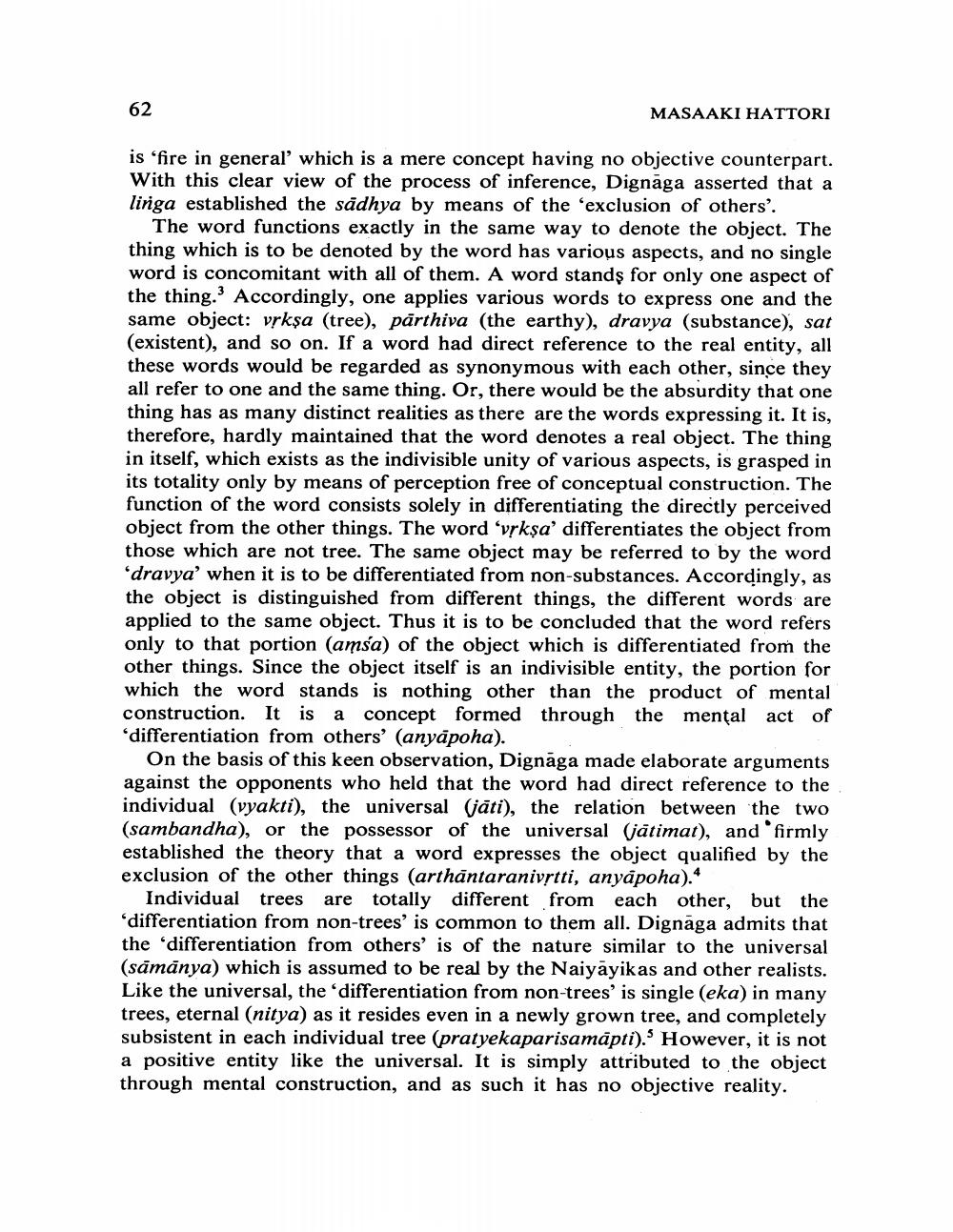Book Title: Apoha And Pratibha Author(s): Masakki Hattori Publisher: Masakki Hattori View full book textPage 2
________________ 62 MASAAKI HATTORI is 'fire in general which is a mere concept having no objective counterpart. With this clear view of the process of inference, Dignāga asserted that a liriga established the sådhya by means of the 'exclusion of others'. The word functions exactly in the same way to denote the object. The thing which is to be denoted by the word has various aspects, and no single word is concomitant with all of them. A word stands for only one aspect of the thing. Accordingly, one applies various words to express one and the same object: vrkșa (tree), pārthiva (the earthy), dravya (substance), sat (existent), and so on. If a word had direct reference to the real entity, all these words would be regarded as synonymous with each other, since they all refer to one and the same thing. Or, there would be the absurdity that one thing has as many distinct realities as there are the words expressing it. It is, therefore, hardly maintained that the word denotes a real object. The thing in itself, which exists as the indivisible unity of various aspects, is grasped in its totality only by means of perception free of conceptual construction. The function of the word consists solely in differentiating the directly perceived object from the other things. The word 'vrkșa' differentiates the object from those which are not tree. The same object may be referred to by the word 'dravya' when it is to be differentiated from non-substances. Accordingly, as the object is distinguished from different things, the different words are applied to the same object. Thus it is to be concluded that the word refers only to that portion (amsa) of the object which is differentiated from the other things. Since the object itself is an indivisible entity, the portion for which the word stands is nothing other than the product of mental construction. It is a concept formed through the mental act of 'differentiation from others' (anyäpoha). On the basis of this keen observation, Dignāga made elaborate arguments against the opponents who held that the word had direct reference to the individual (vyakti), the universal (jāti), the relation between the two (sambandha), or the possessor of the universal (jätimat), and firmly established the theory that a word expresses the object qualified by the exclusion of the other things (arthāntaranivstti, anyápoha).* Individual trees are totally different from each other, but the 'differentiation from non-trees' is common to them all. Dignāga admits that the differentiation from others' is of the nature similar to the universal (sámánya) which is assumed to be real by the Naiyāyikas and other realists. Like the universal, the differentiation from non-trees' is single (eka) in many trees, eternal (nitya) as it resides even in a newly grown tree, and completely subsistent in each individual tree (pratyekaparisamāpti). However, it is not a positive entity like the universal. It is simply attributed to the object through mental construction, and as such it has no objective reality.Page Navigation
1 2 3 4 5 6 7 8 9 10 11 12 13
